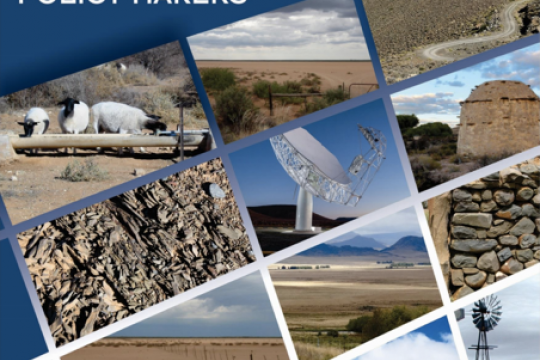The Centre for Scientific and Industrial Research (CSIR) recently released a scientific assessment of the risks and opportunities of shale gas mining, which is proposed for parts of the Karoo region of South Africa.
This assessment is part of a broader government-commissioned strategic environmental assessment of the process of exploiting shale gas reserves through the method of fracturing rock strata using a combination of water and various chemicals.
‘The region of the Karoo being considered for exploitation spans some 200 000km2,’ says University of Cape Town (UCT) economist, associate professor Tony Leiman, who contributed to the analysis.
According to Leiman, the state is considering issuing exploration rights to three private firms who have applied for licences. However, there has been a dearth of information regarding the amount of gas present in the rock strata here, whether it is technically accessible to exploit or financially viable to do so, and what the implications of extraction might be.
‘This shortage of information makes it hard for impartial, balanced decision making to take place,’ Leiman explains. ‘What will it cost to extract, what will the returns be for the economy, and what will the ‘opportunity costs’ be for other sectors which might offset these benefits?’
Unlike ‘conventional’ methane deposits, which are trapped in neat ‘reservoirs’ within the rock that release easily when a well is sunk, shale gas deposits involve gas that is distributed widely through partially permeable layers of rock. To extract the gas, the rock is shattered and the gas released, however the process requires the injection of water. This 'fracking fluid' includes chemical additives which might pose health risks, and in the deep rock formations of the Karoo it can also dissolve toxic minerals, as mine water does in the Witwatersrand area. There are concerns about the potential environmental risks, such as contamination of surface and groundwater, earthquakes, or disturbances to ecosystems and wildlife.
However there are also various other possible impacts: loss of income in the tourism and agricultural sectors here; the social costs of migration; or the possibility of greater inequality as the benefits and risks associated with extraction are unlikely to be distributed evenly amongst communities, for instance.
In February 2016, the South Africa government commissioned the CSIR to gather academics, researchers, and experts across various sectors, to consider the potential impacts of fracking on tourism, agriculture, health, water, the natural environment, communities, and the transport sector, amongst others.
Leiman, who is a senior research fellow with the UCT Environmental Policy Research Unit (EPRU), was invited to contribute to the economic analysis of the possible costs and benefits of fracking here. This economic component of the analysis across the various sectors is what ‘brings it all together’.
‘The aim of this analysis is to inform decision makers in the broadest economic sense,’ explains Leiman. ‘What could the economic benefits be for the region and the country? And how could these be offset by the cost of the potential negative impacts to other sectors and communities in the water-scarce Karoo?’
The report, Shale Gas Development in the Central Karoo: a scientific assessment of the risks and opportunities , was released in November 2016. It considers three possible scenarios, relative to no fracking occurring (the ‘reference case’): firstly, where only exploration of the gas is permitted, but no actual production; secondly, a scenario where a small amount of viable deposits are exploited (5 trillion cubic feet); and finally, where large amounts of gas are mined (20 trillion cubic feet).
The risks are calculated by considering the ‘likelihood of impacts occurring, in relation to their consequences’, according to the report.
Leiman was joined on the CSIR’s economics panel by WWF renewable energy expert Saliem Fakir, consulting economist Barry Standish, and environmental economist Dr Hugo van Zyl.
The final report does not give a final verdict on whether or not government should allow fracking exploration or production to go ahead, but outlines the various risks, how extensive those might be, and how they can be mitigated.
